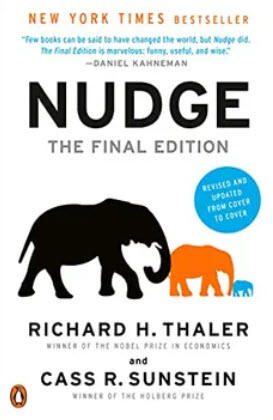Why practice doesn’t necessarily make perfect
In the behavioural economics book Nudge there’s a beautifully simple example illustrating the importance of feedback. It’s a great way to explain why it’s so important for content designers to actively engage in hypothesising, prototyping and testing with users.
I’ve recently finished reading a book about decision economics called “Nudge: Improving Decisions about Health, Wealth, and Happiness”. I’m interested in psychology and behavioural economics for a number of reasons, not least because there is so much I can bring into our work in the Prospective Student Web Team.
In the book, there’s an analogy which really struck a chord with me, so much so that I thought it worth snipping out and sharing in our blog.
The power of feedback – an excerpt from Nudge
There is a section in the book where the authors talk about the likelihood of behaviour change and how feedback influences us.
(I previously wrote in a similar vein: Speed signs and echo chambers – a warning for software projects).
In a nutshell, regular and ideally fairly immediate feedback is a very effective influence on our behaviour.
Here’s what the book has to say:
“…even practice does not make perfect if people lack good opportunities for learning. Learning is most likely if people get immediate clear feedback after each try.
Suppose you are practicing your golf, putting skills on the practice green. If you hit 10 balls toward the same hole, it’s easy to get a sense of how hard you have to hit the ball. Even the least talented golfers will soon learn to gauge the speed of the green under these circumstances.
Suppose instead you are putting the golf balls, but you are not getting to see where they stop rolling. In that environment you could putt all day and never get any better at distance control.
Alas, many of life’s choices are like practicing putting without being able to see where the balls end up, and for one simple reason.
The situation is not structured to provide good feedback. For example, we usually get feedback only on the options we select, not the ones we reject.
Unless people go out of their way to experiment, they may never learn about alternatives to the familiar ones. If you take the longer route home every night, you may never learn there was a shorter one.
Long term processes rarely provide good feedback. Someone can eat a high fat diet for years without having any strong warning signs until they have a heart attack…”
What does this mean for us as digital professionals?
We’re very fortunate working in digital environments as we have lots of opportunities to build in feedback loops. We should rarely be “putting blind”.
But in reality, when thinking about the content that you manage, how often can you say that you see the ball going in the hole? How often do you check that the outcome you seek from a particular piece of content is actually being achieved?
Indeed, are you clear what the desired outcome is for each piece of content you’re managing? In putting terms, can you even see the hole you’re shooting for?
But how can I achieve a short feedback loop?
There are some really simple things that you can do cheaply and regularly to make sure your content is delivering on your goals:
- Ensure you’re clear what your goals actually are.
Page by page, consider what a good visit looks like. What, in an ideal world would your reader be doing? Are you and your stakeholders aligned on these expectations?
- Focus the content and the calls to action.
If you’ve got clear goals for each page, consider whether the critical content is given appropriate priority, and make sure you have at the very least a link to encourage the reader to do the think you want them to do next.
- Check visitor behaviour using analytics.
Given that you’re clear about what should be happening, you need to check regularly that it’s actually happening. Using Google Analytics to monitor average reading time on page, and user flow through pages is pretty easy and gives a strong indication of whether people are interacting with a page in the way you’ve intended. - Watch people interact with your content.
Simple usability testing with your target audience or people who can play the part is a really easy and powerful thing to do. Regularly checking that readers can successfully complete top tasks is fundamental to the success of your website, and there’s nothing more rewarding than seeing the ball go right in the hole!

On the golf course, puttng blindfolded would have a significant impact due to the lack of immediate feedback on your performance. (Chevy Chase in Caddyshack didn’t really cover website user experience though).
Longer feedback loops for the bigger picture
The challenge comes when we consider the bigger, longer loops. The prospective student recruitment cycle is the equivalent of eating unhealthily and waiting for the heart attack. Many small behaviours over a long period of time that ultimately have a significant impact.
So the challenge here is to break down those longer term goals. What micro behaviours can you identify that will suggest that your target user is likely to ultimately do the thing you aspire them to do?
For example, if we aspire for a strong batch of applications to a postgraduate degree who are likely to accept our offer to study, that’s a pretty long term goal. Likely in the region of 9-12 months, for some students even longer. But we can consider the micro-behaviours we would expect to see them exhibit on the website that suggest that they’re likely be a strong applicant who has considered all the factors influencing whether they’ll accept an offer.
We can look at how website visitors interact with critical information. Have they spent time looking at entry requirements, fees information, scholarships and funding opportunities and other areas that we know are top tasks for a prospective postgraduate? We can conduct usability testing to see first hand how easy (or not) it is to complete top tasks. We can monitor enquiry trends relating to those top tasks. If students are asking about things that they could’ve self-served, that’s a pretty strong indicator of website ease of use.
I suppose then, we’re looking at the postgraduate applicant experience as a round of golf rather than an attempt on the putting green. Then again, maybe I’m stretching the analogy too far now…
If you’re interested in what I’ve been writing about here, I can recommend the book as a place to go and dig deeper into the world of psychology and behavioural economics.

Nudge: The Final Edition book cover
About the book: Nudge
“Nudge: Improving Decisions about Health, Wealth, and Happiness” is a book about decision economics. It was written by University of Chicago economist and Nobel Laureate Richard H. Thaler and Harvard Law School Professor Cass R. Sunstein.
I read Nudge as a follow-on from another classic in the field: “Thinking Fast and Slow” by Daniel Kahneman. Thankfully this one was a much slimmer and less academic book. If you’re interested in this kind of thing, I can definitely recommend Nudge. Thinking Fast and Slow was also excellent, but a much longer and more detailed read – not one to enter into lightly!
A bit more about the book, from Wikipedia:
“The book draws on research in psychology and behavioural economics to defend libertarian paternalism and active engineering of choice architecture. The book also popularized the concept of nudge theory. A nudge, according to Thaler and Sunstein is any form of choice architecture that alters people’s behaviour in a predictable way without restricting options or significantly changing their economic incentives. To count as a mere nudge, the intervention must require minimal intervention and must be cheap.”
Read more about the book Nudge on Wikipedia
A book summary for Nudge on readingraphics.com



